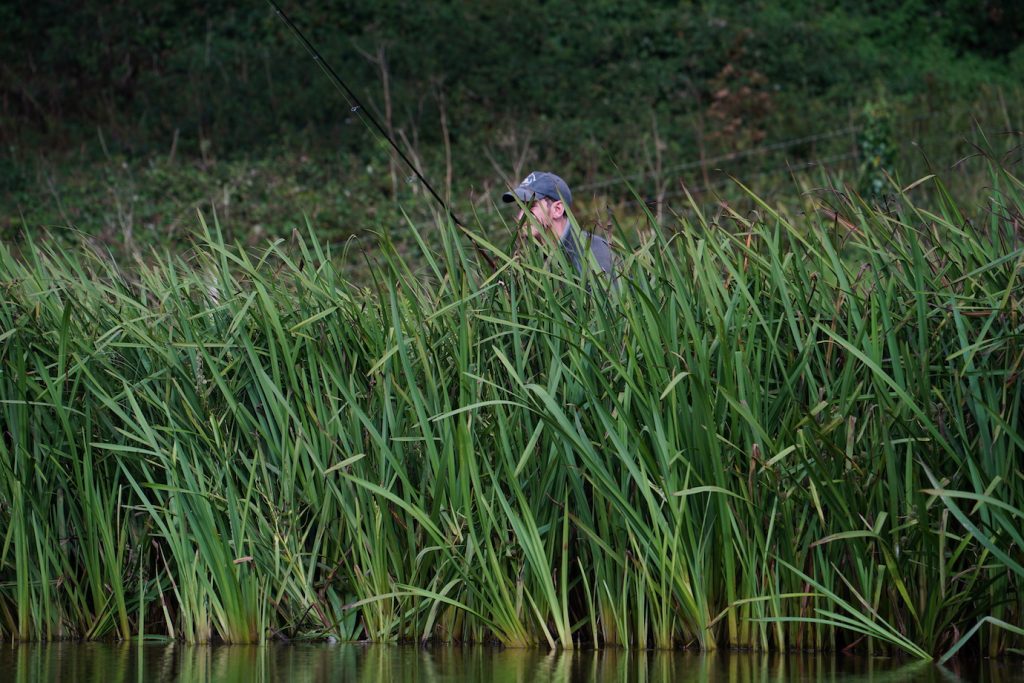
Lure fishing for perch | 24 Perch Fishing Tips
Right now in a water near you, fish are spraying across the water’s surface, with perch chasing beneath. Whether your local water has tree-lined banks or canals filled with submerged shopping trolleys and street cones, there is excellent perch fishing at your doorstep. These tips should help you catch more while lure fishing. Thanks to @icperch for his excellent photography & contribution to this guide.
Fishmag is a participant in the amazon associates program and makes a commission from sales.

Perch fishing set up
This guide focuses on general principles rather than equipment, but the right gear is essential. We have a full guide to choosing the best perch lures and finding a modern perch rod. You can view an example high-end perch fishing outfit via the links below.
A solid perch fishing set-up is a light rod, a 2500 size reel, 10lb braid with 8lb flourocarbon leader. Plus, a landing net, mat, set of disgorgers and a good selection of perch lures.
If you’d like to receive personalised rod recommendations in under 2 minutes, take our lure rod quiz.
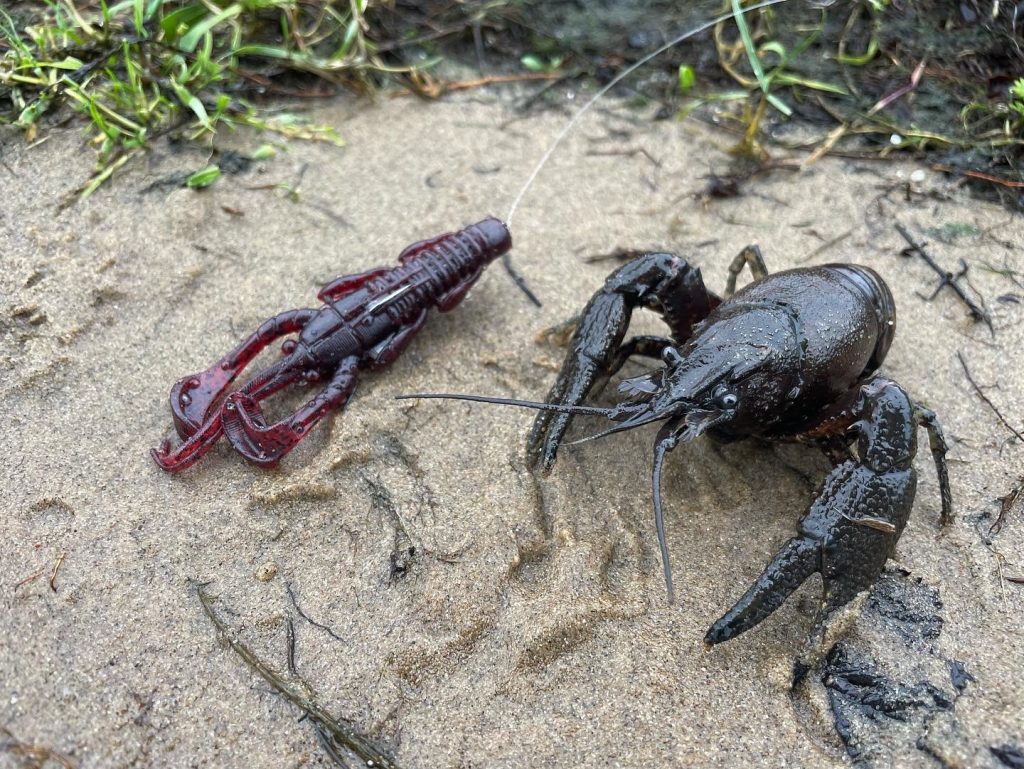
Principle 1: Presenting Perch Lures
24) In cloudy water, target perch with bigger, flashier lures and fish slower and closer to structure
When the water is murky, perch are likely to linger closer to structures. This means they can’t be attacked by pike from every angle. Murky water is a bad time to go searching for perch in unfamiliar spots. You want to target areas you know hold fish in those conditions. Fish with bigger, flashier lures to increase lure visibility, and fish slower to give the perch more of a chance to see and hit your lure.
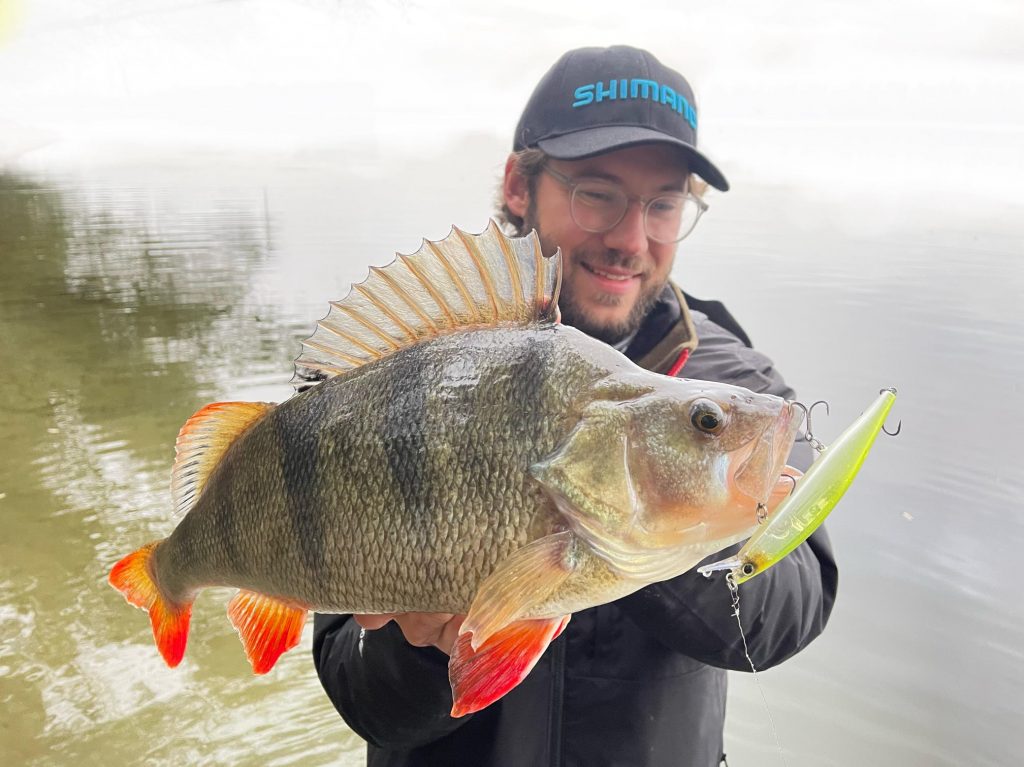
23) In clear water and sunny weather, perch may linger in deeper water
Clear water and sunny weather may not be ideal for perch fishing. Perch need to protect themselves from aerial predators like birds and other fish like pike. When conditions are clear and bright, seek deeper water and areas of shadow that perch can use to conceal themselves. You need lures you can cast a good distance to reach deeper water if you’re fishing in big lakes. We have written elsewhere about using perch jigs for this purpose.
22) If the bottom is light fish with dark lures and vice versa
The best lure colour for perch is perhaps dictated more by the colour of the bottom than any other factor if you’re fishing close to the bottom. Dark lures stand out against light, silty ground. Light lures stand out better when the ground is muddy or leafy, such as in Autumn. I learned this from the blog of Adam Kirby.
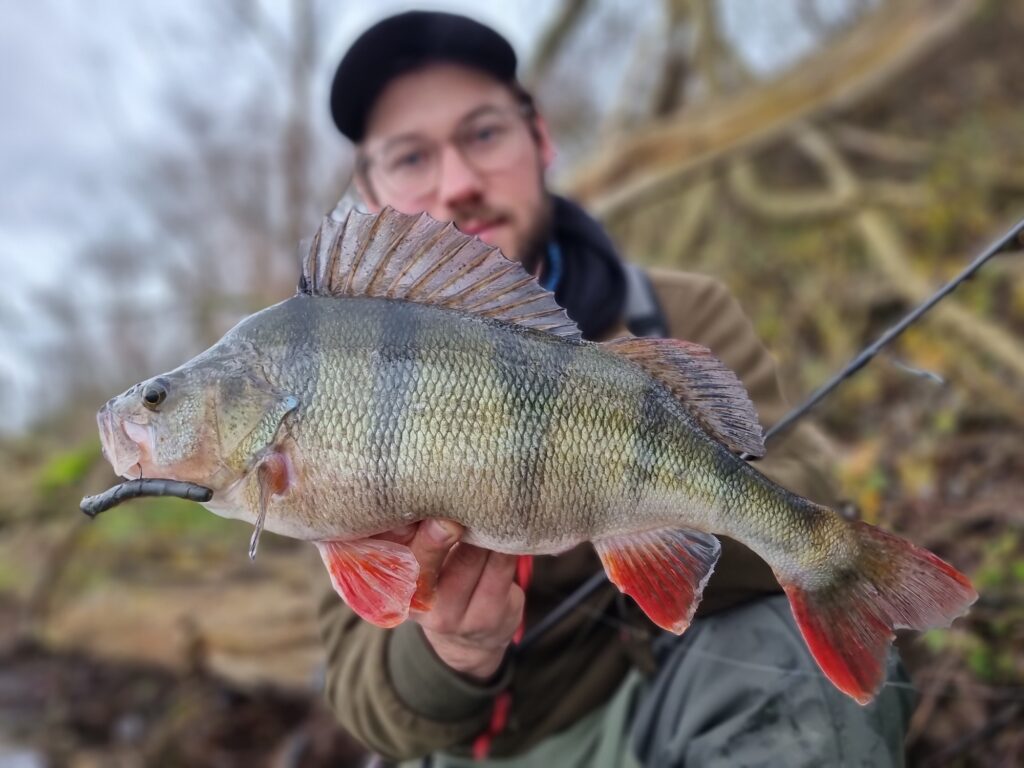
21) UK winter perch fishing often means smaller lures fished slower & deeper
As the water cools, the metabolism of the perch slows down. This means the fish is kind of semi-hibernating so that it can survive when food is less plentiful. It makes them slow and sluggish. This means they prefer easier meals. Many of the easiest meals are found near the bottom. The creatures they can eat there are usually slow, dead or dying—fast food for a perch. For this reason, smaller lures fished slowly near the bottom are often the best for UK winter perch fishing.
20) UK summertime perch fishing means fishing faster with bigger lures and search the whole water
In summer, more baitfish are available, so the fish take a more active hunting strategy. They are willing to chase prey throughout the water column. Fish are less tentative and more aggressive. You can fish with bigger lures (3-5”), retrieve much faster and search out fish throughout the water column. Fish will be more spread out. Summer is the time to reach for perch plugs around 2-4″.
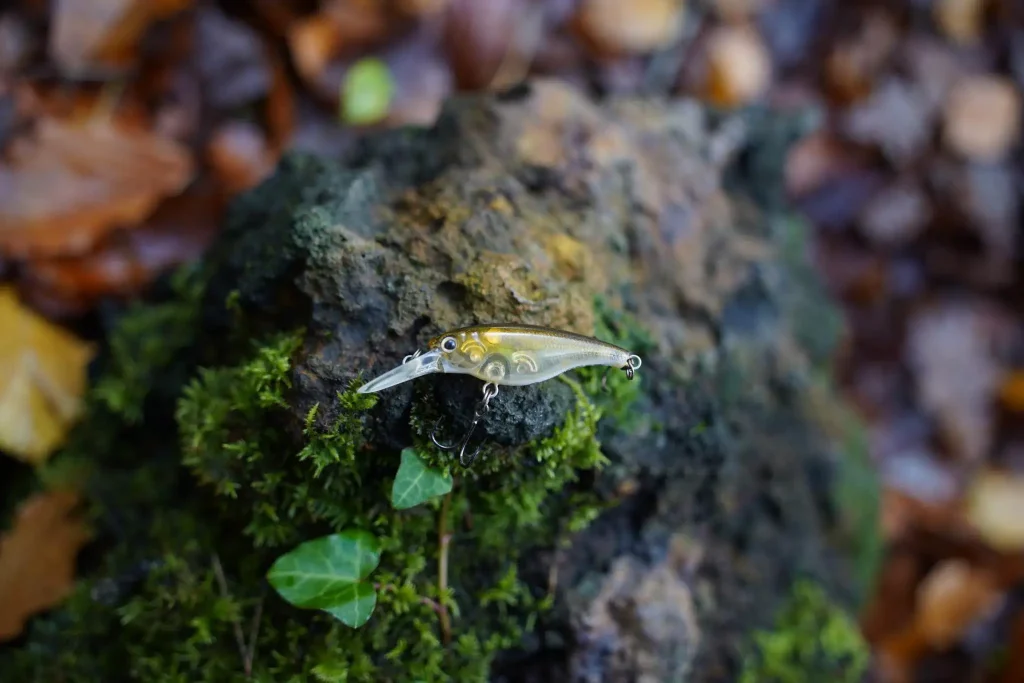
19) From December onwards, drop shotting is no.1
Once the water has cooled off, perch will be closer to the bottom, lingering nervously around structure. They are a prey species too and structure provides the opportunity to hide from pike and ambush prey themselves. It’s less effort than chasing baitfish!
The drop shot rig suspends your soft lure about 2ft off the bottom. It can be bounced back to you with far fewer snags than a jig head bounced along the bottom. It’s also kept in line of sight of fish. The disturbance of the bottom with the drop shot creates a trail of dust in the sediment that perch can follow to your lure when they’re scrounging. This is similar to the trail left by insects or crustaceans.

When drop shotting you should allow the lure to be static or gently sinking much of the time. This is achieved by allowing a slight slack in your line. Doing this is easy – just stop retrieving and wait. Perch often hit when a formerly moving lure stops moving for a while.
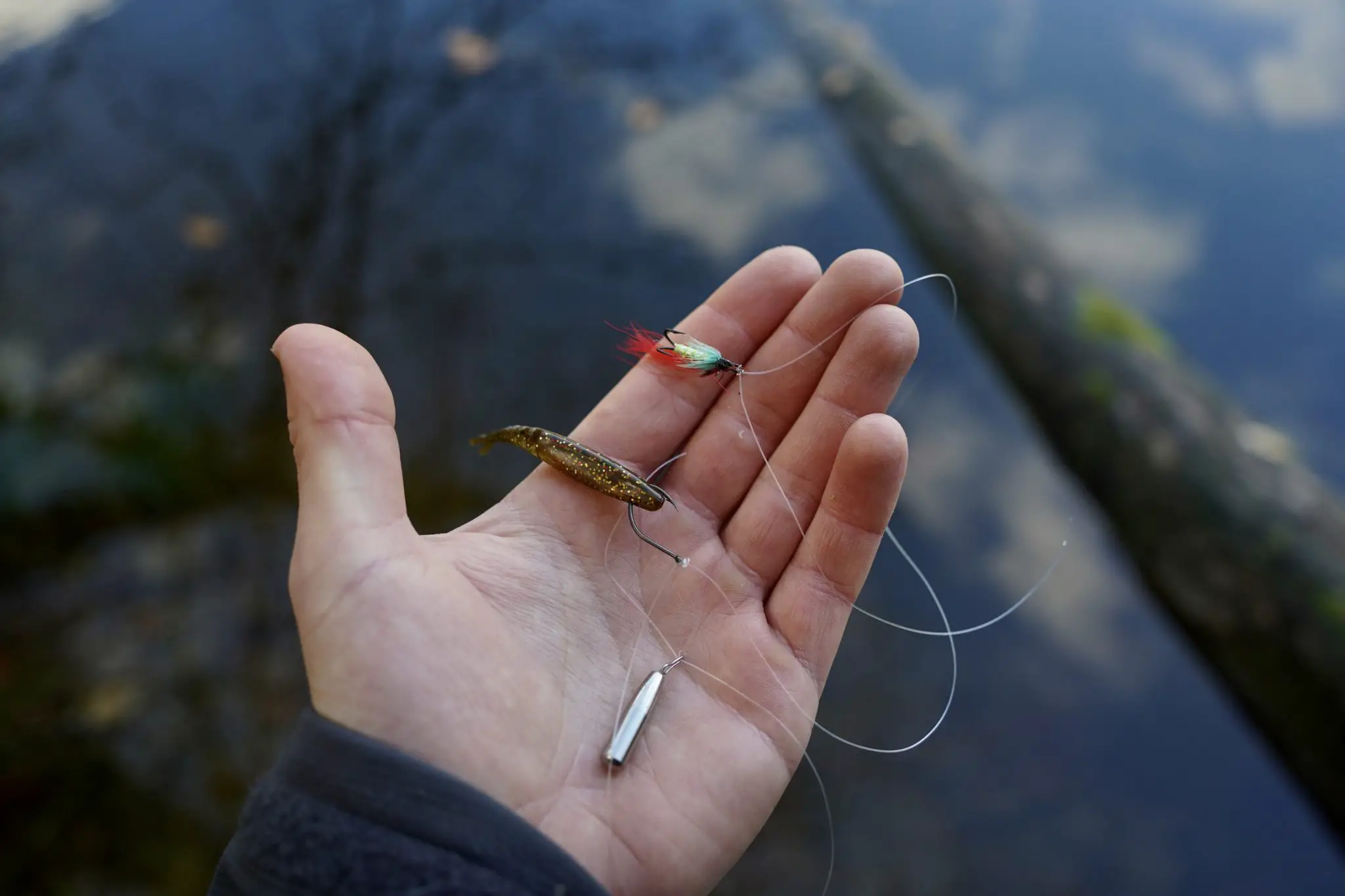
18) Drop shotting is also useful in high-pressure waters, where you want to fish with smaller lures and retrieve slower
Overfished waters are worth avoiding, but many of the biggest perch in the UK live in waters that are stocked with fish and popular with anglers. This means perch have likely been caught before. In these locations, perch may be more cautious and smaller lures fished slower, such as with a drop shot rig, can prove effective when perch won’t chase something larger. I would advise against fishing in high-pressure waters. The first place since the fun of exploring new potentially untouched marks is the best thing about perch fishing. This is easier when you live in a more rural area, though.

17) For average perch: 2” lures get more hookups
Most perch are small. Any lures over 2” will reduce the number of fish you catch. If you want to maximise your chances of catching perch, you need to fish with an ultra-light set-up. If you want to filter out the smaller fish and only catch larger ones, increase lure size to 3-5”. If you’re fishing in a British canal, chances are most perch are pretty small. 2” soft lures are perfect in this situation, especially in winter.
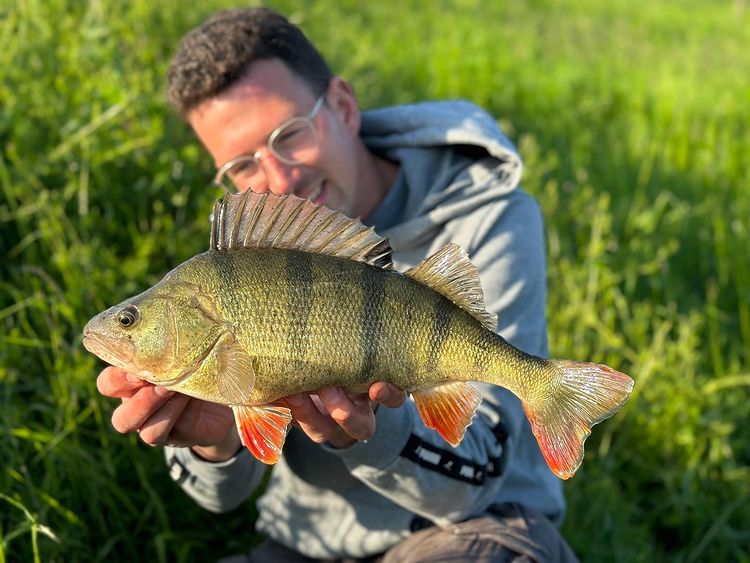
16) Save those creature baits for winter
Creature baits around 1-2” can be highly effective in winter when perch are lingering near the bottom looking for an easy meal. Freshwater crayfish – a food source in many rivers and lakes for the perch – are most plentiful throughout the warmer months. However, creature baits are one of the saviours of British winter for the perch, strangely.

15) Save those plugs with bigger actions for summer
Plugs with large actions can turn the fish on in summer and elicit impulse strikes. However, in winter, the Perch may respond to these plugs with concern rather than excitement. Plugs may look like far too much effort for what they’re worth.
If you do fish with plugs in winter, try fishing deeper with lots of pauses and twitches. You could even hold the plug completely still for up to 7-8 seconds mid-retrieve. This makes the ‘fish’ look like an easier snack.

Principle 2: Reading Rivers, Lakes & Canals for Perch
14) Perch hunt in and around structure
Discovering and targeting underwater structures is the secret to successful perch fishing, especially in winter when fish hug structures closely. Structure means things like outflows, submerged metal railings, pockets of darker water where the depth suddenly changes. Also, trees that have fallen into rivers, moored boats, boulders, reed beds and lily pads and bridges where the shadow meets the light.
Perch and many other species congregate around structure because it offers protection from predators. It’s also a good vantage point for ambushing their own prey. There are typically more bait fish, insects and other food sources around structure than there are in open water with a clear bottom.
Look out for deeper runs alongside the bank, steady runs alongside undercut clay banks, underwater pits, and areas where trees are hanging over the water and creating shadows ripe for ambush. Reeds are especially good – they have those camo stripes for a reason! Inflows are often areas where perch congregate in great numbers. You want to cast just around the edges of the flow, where the water movement is a little slower, if there’s quite a current.
Perch prefer gravel to silt. Bulrushes – those wetland plants with the brown things that look like boom mics or huge cigars on them . Yeah those. They like to grow in areas with gravel bottom. They are therefore a good indicator that the ground is good for perch fishing. You have to be pretty good on plant ID for this though because Bulrushes look pretty much the same as Giant Reed Mace, which grow in mud!
13) Canal fishing for perch is best in the early morning
If you’re fishing canals with poor water visibility of little more than a hand length, this could be caused by boat traffic. If that’s the case, fish very early before the boats have had time to churn up the bottom. When visibility is poorer, perch may hug structure more closely. Perch are prey for larger species like pike, and in the open water they are exposed. In murkier water, many will reach for lures with more colour, and a larger size. They might also fish them with a slower retrieve with less twitching. This is to help the perch locate and hit the lure. In terms of colour, the verdict is not really out and the only answer is to experiment. I use white, black, greens, yellows and pink lures for perch primarily.

12) Explore untouched farmers’ ponds and natural ponds for truly wild perch
For me the best perch fishing involved finding spots with wild fish nobody has caught before. Exploring new marks is more rewarding to many than the fishing itself. This often means fishing quarries and ponds that aren’t accessible by paths or that are on private land that almost nobody fishes.
Farmer ponds can be extraordinary perch spots – it’s surprising that small pools could hold good fish, but thankfully they do. Some very big perch are caught in small ponds. It’s especially fun to go on Google earth and identify these farmers’ pools and ask if you can fish them. You are likely to find marks that nobody else fishes.

11) Move with the wind
Many fish move to the windward end of the water. This makes sense because the water movement would drive bait down to that end of the water and have more plentiful food. The perch are likely to follow prey fish that move with the wind.
10) River fishing for perch in the UK can mean bigger fish
Cast into structure, fish with larger lures because bigger fish are often present in rivers compared to canals and most ponds or lakes. Cast into structure, basically cast into the snags! Look for areas where the water depth suddenly changes, where logs are creating pockets the perch can linger in and wait for prey. Try letting lures drift downriver rather than only casting and retrieving.
9) Fan-casting is the best way to work a water thoroughly
Try fan-casting, covering the water in front of you in a series of casts from left to right. If you don’t have any hits straight away, move on to the next swim.
8) Try dibbling for perch
Dibbling – a technique that has gained popularity in international Streetfishing Predator competitions. Essentially, you lead your lure down the canal or river bank as if walking a dog, twitching the lure up and down as you proceed. If it’s a plug or paddle tail with an action, you can simply walk the lure. Alternatively, you can fish on the drop with other soft plastics. This involves lifting the lures up and letting them drop to the bottom. You then work your way along the canal at a slower pace. The rationale behind this is that Perch have a preference for structure, and the canal walls provide a good example of this. Therefore, your odds are best when you cover a lot of ground over this peak area. This method has proven so effective that many anglers rely almost exclusively on it during these competitions.
Even if this method doesn’t appeal to you, it serves as a good reminder. Always cast along the bank before you even consider casting anywhere else!
7) Find underwater structure with a bluetooth sonar device that links to your phone
Many of the best underwater structures are not visible to anglers, even with polarised sunglasses. The Deeper Fish Finder solves this.
You need a bluetooth fish finder, just like fishing guides use for finding fish for their clients while boat fishing. It’s almost cheating. The result will be that you learn a lot more about how perch respond to different conditions…where they congregate at different times… This is all data you can use to catch more fish when you’re not using the fish finder. If your goal was to maximise catches you would benefit from buying a device such as this.
If you’re a geek it’s also just pretty interesting to know what the structures are like underwater at your local marks.
When sea fishing, we can visit marks on spring low tides, but in rivers and lakes, this is impossible – although in summer, whenever, the water is loe you can sometimes begin to see bits of structure that aren’t visible in winter.
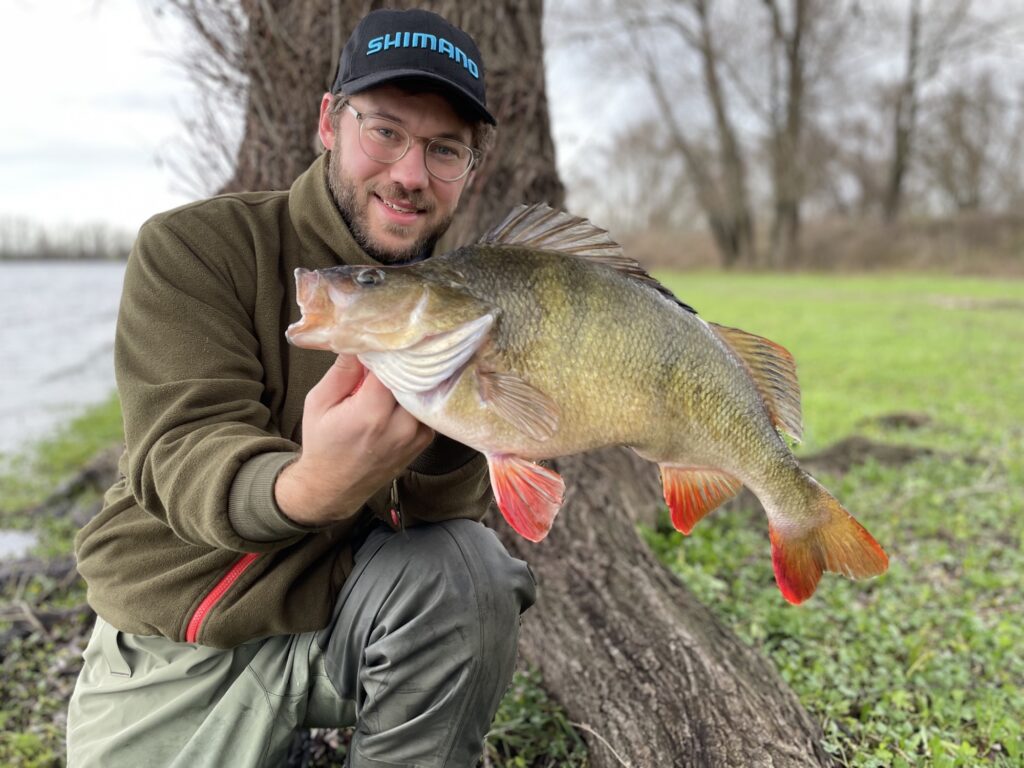
Principle 3: How to catch big perch
6) To catch big perch, fish in bigger waters with bigger lures around 3-5”
In summer big perch don’t tend to bother with smaller lures around 2” and will often ignore them. They have the energy to hit bigger fish in summer and so that’s what they prioritise. You can fish 20g jig heads with 5” soft plastics and big perch will hit them – as many a pike angler has discovered. I would reach for a 3-4” paddle tail most of the time when targeting larger perch. Perch size is not determined by the size of the water, but correlates with it as larger waters often hold more baitfish. Stocked ponds can also hold larger fish when roach and rudd are plentiful.
5) For big UK perch, go lake fishing
Bigger lakes mean the potential for bigger perch. Actual fish size is not determined by the size of the body of water. It’s more about baitfish/food availability, and that does correlate positively with the size of the water. This means lake fishing is your chance to seek out specimen fish. Reach for larger lures in the summer months. Many reading this guide will find it odd that much of the advice is basically to fish much slower and do less with your lures. It’s a world away from the traditional approach of casting out spinner and reeling the thing back in again!
4) If you’re catching small perch, you’re unlikely to then hook a big perch
Some say that if you catch small perch, you should move area because you’re unlikely to hook a big perch in that area. If a big perch was present, the theory goes, it would have got to the lure first. There is a dominance hierarchy amongst fish. In my experience, my big perch catches have always been first or second cast at a new spot.
3) The best time to catch perch is dawn, followed by dusk, or night time for biggest fish
Like many species perch feed far more actively around first and last light. Perhaps in this window the baitfish are still just waking up – I don’t know what causes this behaviour, but it seems to be pretty much universal around the world with predatory species.
2) In wild waters, whack out a paddle tail or plug and search for uncaught monsters
Uncaught perch are more bold. If you are one of the first people to throw a lure into a lake or pond in weeks or months, you have a good chance at tempting uncautious larger fish. This is what perch fishing is all about for me. You won’t find big perch in small wild ponds, because there won’t be the population of stocked fish for them to grow fat.
1) Get a rig wallet to have pre-made rigs ready
A rig wallet allows you to keep pre-tied rigs at hand as soon as you need them. This helps you maximise the time you spend fishing rather than tying knots. Tying knots in the British winter is just about the worst thing about Winter perch fishing! A rig wallet is a real asset. It’s also more rewarding to make rigs at home while watching fishing vids on Youtube than it is to tie them on the bank in the cold, wet and wind, where it feels more of a frustration than the satisfying process it could be.
Rig tying is a better fireside activity than a waterside one!

Perch Fishing Q&A
What is the best lure retrieval for perch?
Lure retrievals can get overly complicated – the two main things are retrieval speed and depth. If you’re a beginner, your best bet is to use a steady retrieve and just mix up how long you wait before you start retrieving after each cast. Part way through each cast, if your lure is light, you may want to stop retrieving to let it sink again. A lot of very experienced anglers do nothing more than this, it’s simple but it works.
You can also experiment with twitching the lure or suddenly lifting your rod tip to get the lure to rise quickly in the water before sinking straight back down. This approach is good for triggering impulsive reactions in fish but can also spook them. Generally overworking lures is more common than underworking them, especially in winter.
If the water is murkier or colder, retrieve slower. If it’s clear water in summertime, faster.
Over time you will adjust your twitching to what you know gets bites.
How big do Perch grow?
The European Perch grows to up to around 6lb, with a fish of that size being around the British record. They can grow a little larger in Australia where they have been introduced and in mainland Europe, but certainly not by much.
Perch share the same predatory form as many other game fish, such as the freshwater bass in the US and to some extent the sea bass of Europe. The profile of the fish is designed for power and speed.
Does freshwater fishing in the UK require a licence?
Yes, freshwater fishing in the UK requires a licence and you can find out more on the UK gov fishing page. Some clubs also require you to use a landing mat and or net, or barbless hooks to reduce harm to fish being caught. There is a separate license required for migratory trout, but perch are covered in the regular freshwater license.
Perch swim bladder issues & what to do about it
Perch have swim bladders – an organ that is essentially like a balloon inside the fish, which is filled with the correct amount of air to suspend the fish in the water. This allows the fish to swim easily without expending energy staying afloat! When we reel a fish in too quickly, or up from very deep water, such as that which is found in some lakes and all lochs – the swim bladder can inflate, literally protruding from the fishes anus.
It’s pretty awful, especially since pretty much all perch fishing in the UK is catch-and-release. When you release these fish, they cannot swim because the bladder causes them to float on the surface upside down. A light weight lure rod slows down the rate at which fish are pulled up through the water column, which may give the fish time to adjust their swim bladder to their new depth. This is clearly a major plus for modern ultra light spinning rods and size 1000 – 2500 spinning reels if you fish deep water marks.
To strike or not to strike with perch?
Striking fish is more important when you are using larger (or blunter) hooks and when the mouths of the fish are hard. If you are fishing with the lures we reckon you should be, you will be using very fine hooks and therefore won’t need to strike to get a hook up. Naturally you will lift your rod and reel faster once you hook a fish and this is sufficient – a sharp strike is more likely to pull hooks away from the perch. This is counterintuitive if you’re used to fishing for much larger fish with bigger lures, when striking is more important.
Should I use bait finesse vs fixed spool for perch UK?
The bait finesse system as it’s sometimes known allows for more accurate casting, which is useful when fishing in heavily vegetated waters, where being able to cast onto a spot the size of an inch squared gives a significant advantage. Think about the canals and leafy river banks we have in the UK – accurate casting is important in these locations. However, accurate casting is also possible for experienced anglers with a fixed spool set up. The bait finesse system otherwise provides limited advantage and many anglers find they get lots of birds nests – line tangles – when fishing this way, so it can take a while to get used to.
Useful links
https://www.fishingtv.com/playlists/top-10-perch-fishing-videos/
https://www.anglingtimes.co.uk/advice/tips/six-brilliant-tips-for-fishing-for-big-perch/
